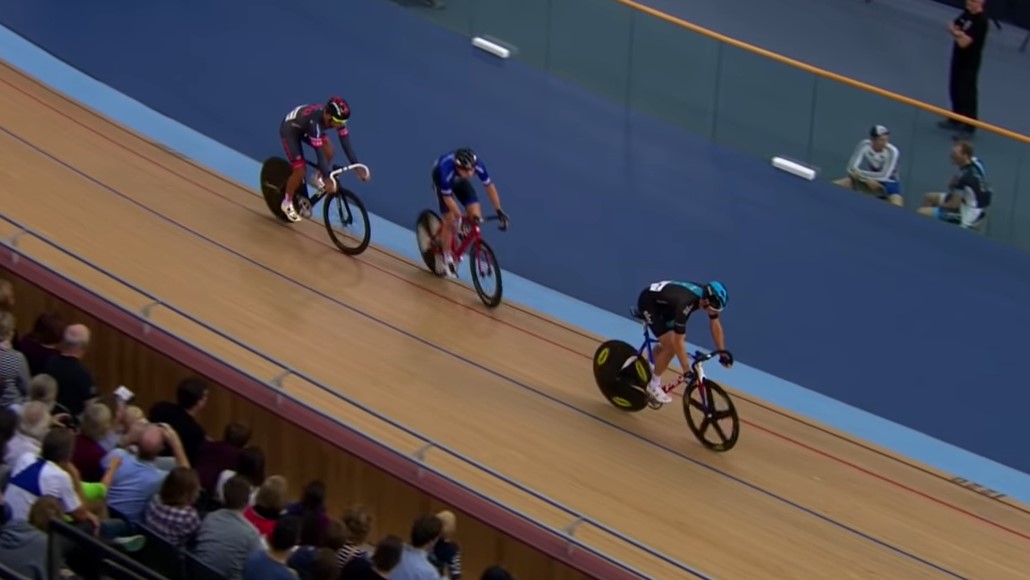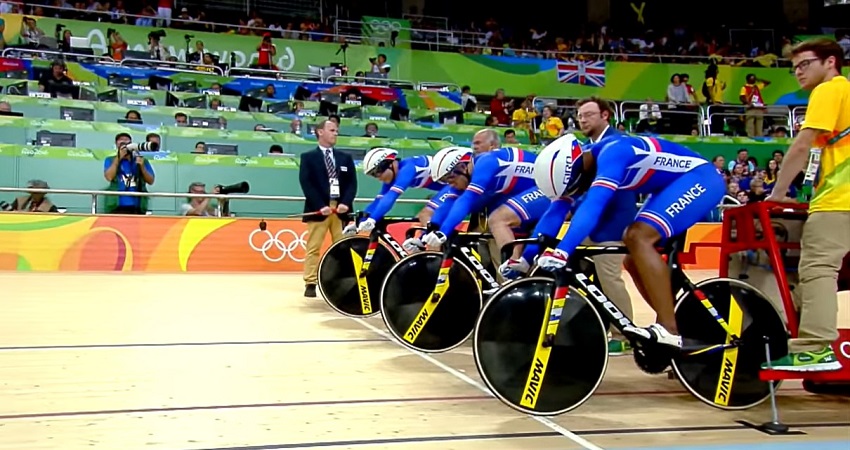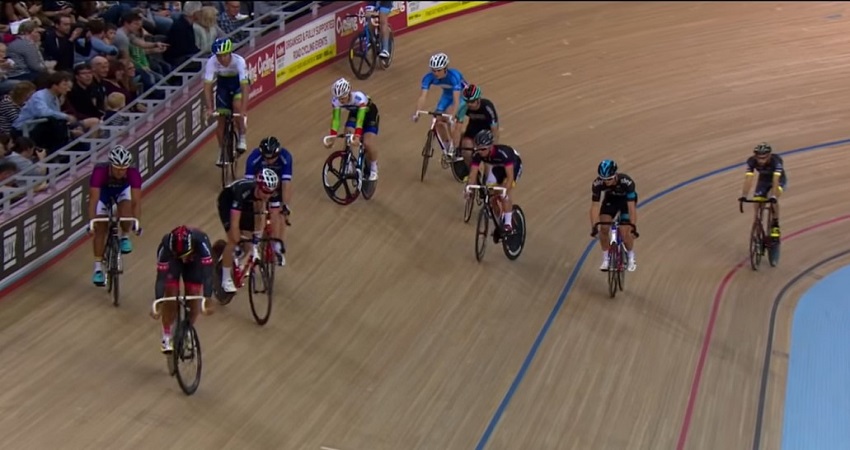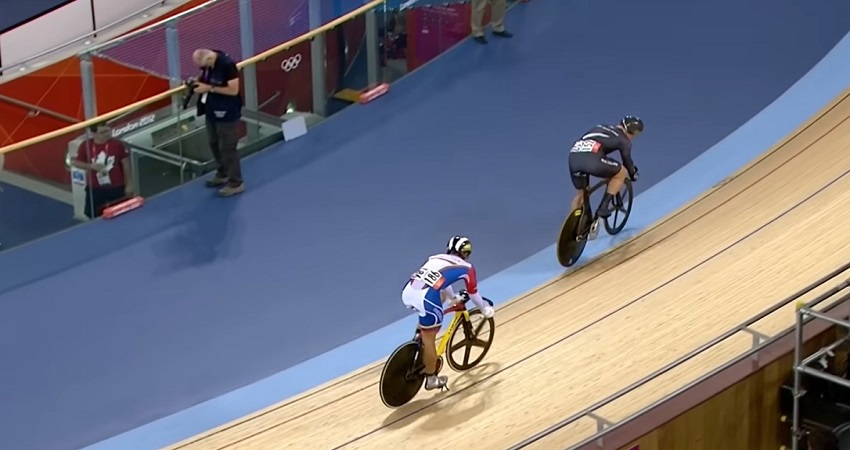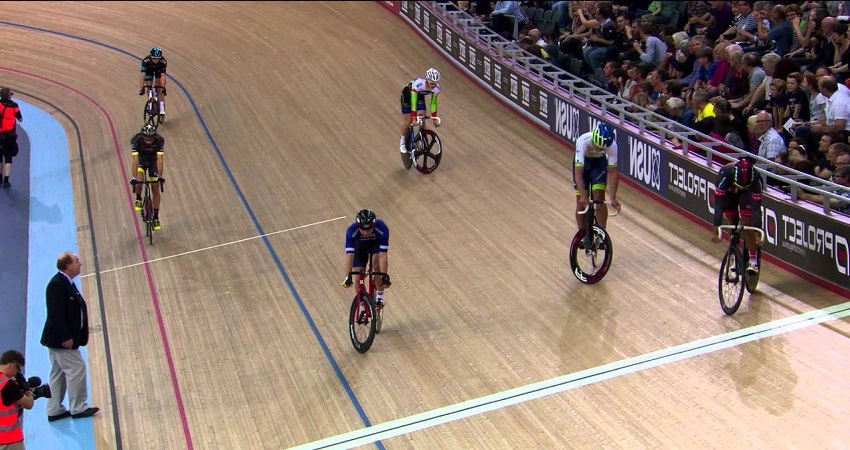
An ordinary bike cannot be used in a velodrome due to its specific design requirements. However, velodrome racing requires specialized track bikes with fixed gears and no brakes to ensure safety and optimal performance on the steeply banked curves of the track.
These track bikes are specifically designed for velodrome racing, with light frames, aerodynamic features, and smooth tires to maximize speed and maneuverability. Riding an ordinary bike in a velodrome would be dangerous and difficult to control, as the bike would not be able to handle the high speeds and tight turns required on the track.
Velodrome: A Specialized Cycling Track
Racing on a velodrome is an exhilarating experience for cyclists who want to take their skills to the next level. But what exactly is a velodrome? A velodrome is a specialized cycling track specifically designed for track cycling. It offers a unique environment for cyclists to showcase their speed, power, and agility. In this blog post, we will explore the design and features of a velodrome, as well as its purpose in the world of cycling.
Track Design And Features
The design and features of a velodrome play a crucial role in creating an optimal racing environment. Velodromes are typically oval-shaped and have banked turns, allowing cyclists to maintain high speeds as they navigate the corners. The degree of banking can vary, depending on the type of track and its intended use.
Velodrome tracks are made from specially treated wood or concrete, providing a smooth surface that maximizes traction for the cyclists. The track surface is also specially designed to minimize resistance, enabling the riders to achieve higher speeds and break records.
Additionally, velodromes often have safety measures in place, such as protective barriers and padding, to ensure the well-being of the cyclists. These features help to minimize the risk of accidents and injuries during races and training sessions.
The Purpose Of A Velodrome
The purpose of a velodrome extends beyond offering a unique racing experience. Velodromes serve as training grounds for track cyclists, helping them develop the specific skills required for this demanding discipline. Riding on a velodrome requires precision, control, and the ability to navigate the challenging banked turns at high speeds.
Velodromes also act as venues for competitive events, including track cycling races at the regional, national, and international levels. These events attract cycling enthusiasts from around the world and provide a platform for athletes to showcase their talent and compete for prestigious titles.
Furthermore, velodromes promote community engagement and contribute to the growth of the sport of cycling. They often offer programs and initiatives to encourage participation from all age groups and skill levels. This inclusive approach helps to foster a sense of camaraderie among cyclists and creates a nurturing environment for the development of future champions.
Understanding Ordinary Bikes
When it comes to cycling, there are various types of bikes designed for specific terrains and purposes. One such bike that many of us are familiar with is the ordinary bike, also known as a road bike or a standard bicycle. Today, we are going to explore the characteristics and limitations of ordinary bikes and find out if they can be used in a velodrome.
Characteristics Of Ordinary Bikes
Ordinary bikes are the most common type of bicycle that we see on the streets. They are designed for general-purpose use and are versatile enough to tackle various terrains. These bikes typically have a lightweight frame, drop handlebars, and thin, smooth tires. The gear range is suitable for regular cycling, providing a comfortable riding experience for commuters, fitness enthusiasts, and casual riders.
Moreover, ordinary bikes are equipped with a freewheel mechanism, allowing the rider to coast without pedaling. This feature is convenient for long rides and effortless cruising, especially on flat surfaces. The comfortable riding position, provided by the straight handlebars, ensures optimal control and stability during everyday cycling activities.
Limitations Of Ordinary Bikes
However, when it comes to using ordinary bikes in a velodrome, there are certain limitations that need to be considered. Velodromes are purpose-built tracks designed specifically for track cycling, which involves high speeds, steep banking, and close racing. Ordinary bikes are not optimized for these conditions, making them suboptimal for velodrome use.
The most significant limitation is the lack of fixed gear on ordinary bikes. Unlike track-specific bikes, which have a fixed rear cog, ordinary bikes have a freewheel that allows the rider to stop pedaling while coasting. This means that the rider cannot achieve the same level of control and acceleration as a track cyclist, who utilizes a fixed gear to maintain a constant pedal rhythm and maximize speed.
Additionally, the frame geometry and tires of ordinary bikes are not designed to withstand the high speeds and stresses of velodrome banking. The steep banking can put significant strain on the tires and frame, compromising the stability and safety of the rider.
| Limitations of Ordinary Bikes |
|
|---|
In conclusion, while ordinary bikes are excellent for everyday rides and various terrains, they are not suitable for velodrome cycling. The limitations, such as the lack of fixed gear and incompatible frame geometry, make them less efficient and safe in high-speed, banked track environments. Therefore, if you are considering venturing into the world of velodrome cycling, it is recommended to invest in a specialized track bike for an exhilarating and safe riding experience.
Challenges Of Using An Ordinary Bike In A Velodrome
When it comes to riding a bike in a velodrome, using an ordinary bike can present a number of challenges. Safety concerns and performance issues are two key factors that need to be considered. Let’s take a closer look at these challenges and understand why using an ordinary bike in a velodrome may not be the best idea.
Safety Concerns
Riding an ordinary bike in a velodrome can be risky due to the high speeds and steep banked corners. Velodromes are specifically built for track cycling, and their design caters to the unique demands of the sport. Ordinary bikes, which are typically designed for road cycling, may not be equipped to handle the tight turns and intense speeds.
One safety concern is the stability of an ordinary bike while taking on a banked corner. The steep angles of the corners can cause instability, increase the risk of slipping, and potentially result in accidents. Additionally, the lack of proper gearing and responsive brakes can make it difficult to control speed and navigate the velodrome safely.
Performance Issues
When it comes to performance, using an ordinary bike in a velodrome can be a major drawback. Velodrome tracks are generally smoother and have a different surface compared to regular roads. This difference in terrain can significantly impact performance when riding an ordinary bike.
The lack of aerodynamics in ordinary bikes can also hinder performance in a velodrome. Velodromes are designed to maximize speed, and riders often achieve high velocities by utilizing aero positions and streamlined equipment. Ordinary bikes, with their upright riding positions and bulkier frames, may not offer the same aerodynamic advantages.
Another performance issue is the lack of stiffness in an ordinary bike frame. In a velodrome, riders need maximum power transfer to maintain speed and acceleration. Specialized track frames are typically stiffer, providing greater efficiency in power transfer. Ordinary bike frames, designed for road cycling comfort, may not offer the same level of stiffness, resulting in reduced performance on the track.
| Ordinary Bike | Track Bike |
|---|---|
| Lacks specialized track-specific geometry and design | Designed specifically for track cycling, with steep seat angles and precise frame geometry for optimal performance |
| Typically equipped with gears and brakes | Fixed gear and no brakes for better control and safety on the track |
| Upright riding position | Aero position for improved aerodynamics and reduced wind resistance |
| Heavier and less stiff frame | Lightweight and stiff frame for maximum power transfer and responsiveness |
While it may be tempting to use an ordinary bike in a velodrome, the challenges of safety and performance cannot be overlooked. Track cycling requires specialized equipment that ensures both rider safety and optimal performance. If you’re serious about velodrome riding, investing in a track bike is the way to go.
Modifying An Ordinary Bike For The Velodrome
If you’ve ever wondered whether you can ride an ordinary bike on a velodrome, the answer is…sort of. While it’s true that you can physically ride an ordinary bike on a velodrome, it’s not recommended due to safety concerns and performance limitations. Velodromes are designed specifically for track cycling, which requires certain modifications to ensure optimal performance and safety.
Changing The Gearing
If you’re planning to ride your ordinary bike on a velodrome, one of the crucial aspects to consider is the gearing. Gearing refers to the ratio between the number of teeth on the front chainring and those on the rear cassette. The gearing on an ordinary bike is typically not ideal for the high speeds and constant pedaling required on a velodrome. Therefore, it’s essential to change the gearing of your ordinary bike to match the demands of track cycling.
Installing Track-specific Components
Another important step in modifying an ordinary bike for the velodrome is installing track-specific components. These components are designed to enhance performance and improve handling on the track. Some key track-specific components include aero handlebars, stiffer and lighter frames, track-specific forks, and wheelsets with fixed gear hubs. These modifications can significantly improve your experience and performance on the velodrome.
Conclusion: Considerations For Velodrome Cycling
Ordinary bikes are not suitable for velodrome cycling due to their design and capabilities. To ensure safety and optimal performance, specialized track bikes with fixed gears and no brakes are required for this high-speed, banked track sport.
Choosing The Right Bike
When it comes to velodrome cycling, choosing the right bike is crucial for a successful and enjoyable experience. Unlike ordinary bikes, track bikes are specifically designed for velodrome riding, with features that enhance speed, maneuverability, and control.
To begin with, track bikes have a fixed gear system, which means they have no freewheel mechanism. This design ensures that the pedals are always in motion while the bike is moving, allowing cyclists to make swift accelerations and maintain a consistent cadence. Moreover, track bikes are equipped with a single gear ratio, typically ranging from 82 to 88 inches, tailored to the specific requirements of a velodrome. This limited gear range eliminates unnecessary shifting and allows riders to focus solely on their speed and technique.
Another distinctive feature of velodrome bikes is their geometry. These bikes have steep angles and short wheelbases, providing increased responsiveness and agility. The aggressive positioning allows cyclists to make quick turns and navigate the banked corners of the velodrome with ease, without compromising stability.
The Importance Of Training
While having the right bike is essential, it’s equally important to undergo proper training before attempting velodrome cycling. Riding in a velodrome requires a different set of skills and techniques compared to riding on regular roads.
Firstly, velodrome cycling demands strong leg power and endurance. The constant pedal motion and high speeds require cyclists to develop exceptional leg strength and stamina. Engaging in regular strength training exercises, such as squats and lunges, can significantly improve performance on the track.
Secondly, mastering the art of banking is crucial for velodrome cycling. Riding on the steeply banked turns of the track requires precise balance, body positioning, and control. Developing bike handling skills by practicing on outdoor banked tracks or attending specific track cycling clinics can greatly enhance a rider’s confidence and ability to navigate the velodrome.
Lastly, practicing specific track drills, such as sprint intervals and flying laps, can help improve overall speed and technique. Incorporating interval training into your routine can simulate race conditions and allow you to gauge your progress as you strive to reach new levels of performance.
Considerations for Velodrome Cycling:
- Choose the right track bike: Ensure your bike has a fixed gear system, single gear ratio, and a geometry suited for velodrome riding.
- Train effectively: Focus on building leg strength and endurance, developing bike handling skills, and incorporating track-specific drills into your training.
- Seek guidance: Consider attending track cycling clinics or seeking advice from experienced velodrome riders to enhance your skills and knowledge.
- Safety first: Always prioritize safety by wearing appropriate protective gear, adhering to track rules, and riding within your limits.
As you embark on your velodrome cycling journey, it’s important to keep these considerations in mind. By choosing the right bike and investing time in proper training, you can make the most of your experience and excel on the track. Seeking guidance and prioritizing safety will further contribute to your growth as a velodrome cyclist. So, gear up, hit the track, and enjoy the thrill of velodrome cycling!
Frequently Asked Questions For Can You Use An Ordinary Bike In A Velodrome?
Can An Ordinary Bike Be Used In A Velodrome?
Yes, an ordinary bike can be used in a velodrome as long as it meets certain requirements. The bike should have a fixed gear, no brakes, and drop handlebars. It is also important to wear a helmet and follow the rules and regulations set by the velodrome.
What Is The Difference Between A Velodrome Bike And An Ordinary Bike?
The main difference between a velodrome bike and an ordinary bike is the design and features. Velodrome bikes are specifically built for track racing, with a fixed gear, no brakes, and aerodynamic design. Ordinary bikes, on the other hand, are versatile and can be used for various types of riding, including commuting and mountain biking.
Do You Need Specific Training To Ride In A Velodrome?
Yes, specific training is recommended before riding in a velodrome. It is important to learn track etiquette, safety procedures, and the techniques required for track cycling. Most velodromes offer beginner sessions or training programs to help riders become familiar with the track and gain the necessary skills.
Prior experience in cycling is also beneficial.
Conclusion
It is not recommended to use an ordinary bike in a Velodrome due to the specialized requirements of the track. A track bike or fixed-gear bike is designed specifically for the smooth banked surface and high speeds of a Velodrome.
Attempting to ride a regular bike on the track could be both unsafe and detrimental to your performance. So, if you’re looking to ride in a Velodrome, it’s best to invest in a suitable track bike for the ultimate experience.
